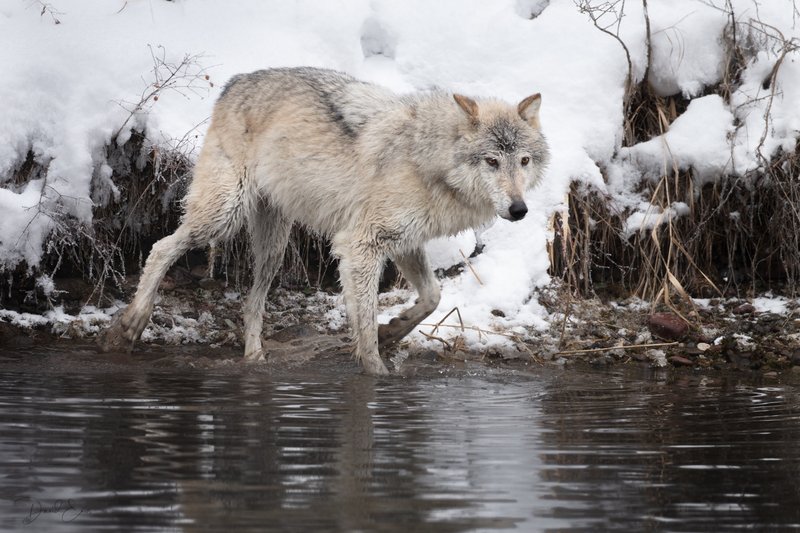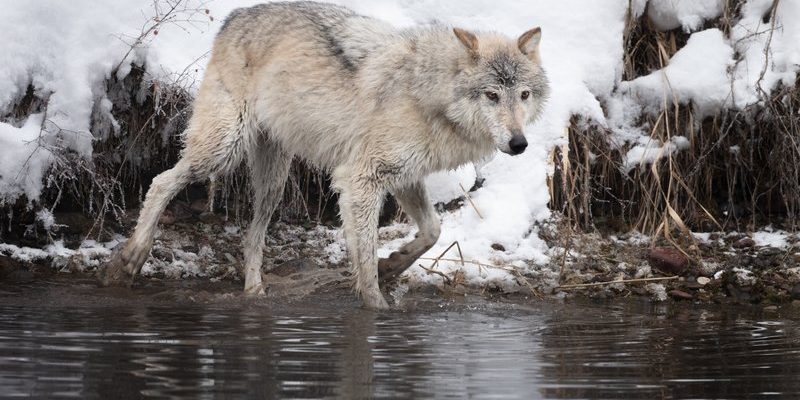
Imagine trying to navigate a frozen world where temperatures can plummet and food is scarce. That’s the daily reality for tundra wolves. So how do they manage to survive? Let’s dive deep into the fascinating ways these wolves tackle the challenges of their icy homes.
Physical Adaptations: Nature’s Gear
Tundra wolves are built for survival in extreme cold. First off, take a look at their thick fur. This isn’t just for show; it’s like wearing a built-in winter coat. The undercoat is dense and soft, providing insulation against freezing temperatures. The outer layer of long, guard hairs repels water and snow, ensuring they stay dry even in the harshest blizzards.
Moreover, their large size means they have a lower surface area relative to their volume, which helps them retain heat. You might even think of them like a big furry ball that keeps all the warmth inside. Their paws are another clever adaptation—broad and furry, they act like snowshoes, allowing them to walk easily on the snow without sinking.
Hunting Strategies in the Cold
Finding food in the tundra isn’t easy, but tundra wolves have some smart tactics. They often hunt in packs, which boosts their chances of catching prey like caribou or arctic hares. Working together, they can outsmart and outmaneuver animals that are usually quite agile.
Tundra wolves are known for their intelligence and strategic approach to hunting. They’ll often use stealth to approach their prey, taking advantage of the snow’s cover. Imagine a game of hide and seek, where the wolves are the stealthy seekers. They stalk quietly, waiting for the perfect moment to pounce, ensuring they don’t scare off their next meal.
After a successful hunt, the pack will share the food. This social behavior strengthens their bonds and helps everyone survive. Sharing meals is a key survival tactic in the harsh tundra, ensuring no wolf gets left behind.
Social Structure: The Pack Dynamics
Speaking of packs, the social structure of tundra wolves is fascinating. They live in family units, typically consisting of a breeding pair and their offspring. This tight-knit structure is crucial for survival. It allows them to work together for hunting, territory defense, and raising pups.
Within the pack, there are clear roles. The alpha wolves take on leadership, making decisions about where to hunt or how to protect the pack. This hierarchy might sound a bit strict, but it’s necessary for order. Each member plays a vital role, ensuring efficiency and a better chance at survival.
Interestingly, the relationships within the pack are also emotional. Wolves show affection by nuzzling and grooming each other. This bonding helps maintain harmony, which is vital when resources are scarce. You might even see them playfully wrestling, which isn’t just fun; it also strengthens their social bonds.
Climate Adaptations: Living with the Environment
Tundra wolves aren’t just tough; they’re clever about adapting to their changing environment. As seasons shift, they adjust their behaviors accordingly. In summer, for instance, they may take advantage of longer daylight hours to hunt more frequently.
During the frigid winter months, food becomes scarce, pushing them to travel greater distances in search of prey. This adaptability helps them navigate the challenges of their ecosystem. Just think of it like a constant game of survival chess, where every move counts.
Moreover, these wolves are equipped with an incredible sense of smell, allowing them to detect prey buried under snow. It’s like having an onboard radar system! This ability becomes especially important in winter when resources dwindle.
Challenges They Face: Survival Obstacles
Of course, life in the tundra isn’t all snowflakes and rosy wildflowers. Tundra wolves face numerous challenges. Climate change is a significant threat, altering their habitat. Melting ice affects their hunting grounds, making it harder for them to find food.
Human activities, like mining and oil extraction, also put pressure on their environment. These disruptions could lead to conflicts between wolves and humans, making it more difficult for the wolves to survive. It’s like trying to play a game where the rules keep changing—frustrating and dangerous!
Furthermore, competition with other predators can lead to tensions. When resources are limited, every creature, including tundra wolves, has to fight harder for survival. This competition can lead to stressful situations within the packs and affect their overall health.
Conservation Efforts: Protecting Tundra Wolves
Given the challenges these magnificent animals face, conservation efforts are crucial. Organizations are working to protect their habitats and promote coexistence with humans. This can involve creating wildlife reserves and educating communities about the importance of preserving these wolves.
Moreover, some researchers are studying tundra wolves to understand their behaviors better. This research helps inform policies that can protect their populations. Just imagine being part of a dedicated team ensuring these wolves have a future. It’s teamwork at its finest!
Education plays a significant role here. By raising awareness about the plight of tundra wolves, we can inspire others to take action to protect them. Remember, every small effort counts when it comes to conservation.
Tundra wolves are truly remarkable creatures, showcasing resilience and adaptability in one of the toughest environments on Earth. From their physical adaptations to their social structures, they exemplify the beauty of nature’s design. While they face serious challenges, ongoing conservation efforts give hope for their future.
So, next time you hear about tundra wolves, think about all the clever strategies they employ to stay alive. They’re not just surviving; they’re thriving in a world that many would find uninhabitable. By understanding and supporting their existence, we can ensure that these incredible animals continue to roam the icy tundra for generations to come.

